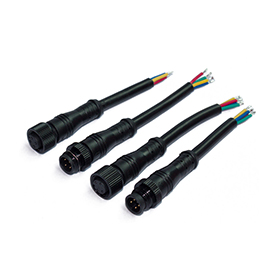News


News

Common Issues with Waterproof Butt Connectors and How to Solve Them
Release time:2025-04-14
viewed:310
Waterproof butt connectors are essential for creating reliable, weatherproof splices in automotive, marine, and outdoor electrical systems. However, improper use or environmental factors can lead to failures. In this article, we explore the most common issues with waterproof butt connectors and provide actionable solutions to keep your connections secure and dry.

Causes:
Improper crimping or incomplete curing of sealant.
Degraded or damaged O-rings.
Solutions:
Use the Right Tools: Crimp with a ratcheting tool to ensure tight, uniform compression.
Choose Quality Seals: Opt for connectors with silicone O-rings or pre-applied adhesive (e.g., heat-shrink butt connectors with glue lining).
Regular Inspections: Check O-rings biannually and replace if hardened or cracked.
Causes:
Exceeding current ratings (e.g., using 16AWG connectors for high-power devices).
Loose crimps or incomplete wire insertion.
Solutions:
Match Load to Connector: Use 14AWG connectors for currents above 15A.
Test Conductivity: Verify connections with a multimeter (target resistance: <0.5Ω).
Causes:
High heat (engine bays) softening plastic housings.
Cold temperatures making seals brittle.
Solutions:
Heat-Resistant Materials: Choose nylon or PBT housings for temperatures up to 125°C.
Metal Housings: Use stainless steel connectors in extreme environments.
Causes:
Exposure to saltwater, acids, or prolonged sunlight.
Solutions:
Corrosion-Resistant Materials: Stainless steel housings or tin-/nickel-plated contacts.
Protective Coatings: Apply dielectric grease to exposed metal parts.
Common Mistakes:
Stripping too little insulation, leaving gaps in the crimp.
Uneven heat-shrink tubing application.
Solutions:
Follow Guidelines: Strip 6–8mm of insulation for full wire insertion.
Proper Heat-Shrinking: Use a heat gun to evenly shrink tubing until adhesive fully seals gaps.
Causes:
Unsecured connectors in high-vibration zones (vehicles, boats).
Solutions:
Locking Connectors: Use threaded or snap-lock designs (e.g., Deutsch DT connectors).
Strain Relief: Secure cables with sleeves or zip ties near connectors.
Causes:
Using 16AWG connectors with thicker 14AWG wires.
Solutions:
Match AWG Ratings: Ensure connector size aligns with wire gauge (smaller AWG = thicker wire).
Prioritize IP Ratings: IP67/IP68 connectors for submersion-prone areas.
Invest in Tools: Quality crimpers and heat guns ensure consistent results.
Routine Maintenance: Inspect seals and contacts every 6 months.
waterproof butt connectors are simple yet critical—when they fail, your entire system is at risk. By addressing common issues like seal degradation, overheating, and vibration, you can ensure long-lasting, watertight connections. Always choose connectors rated for your environment and follow best practices for installation.